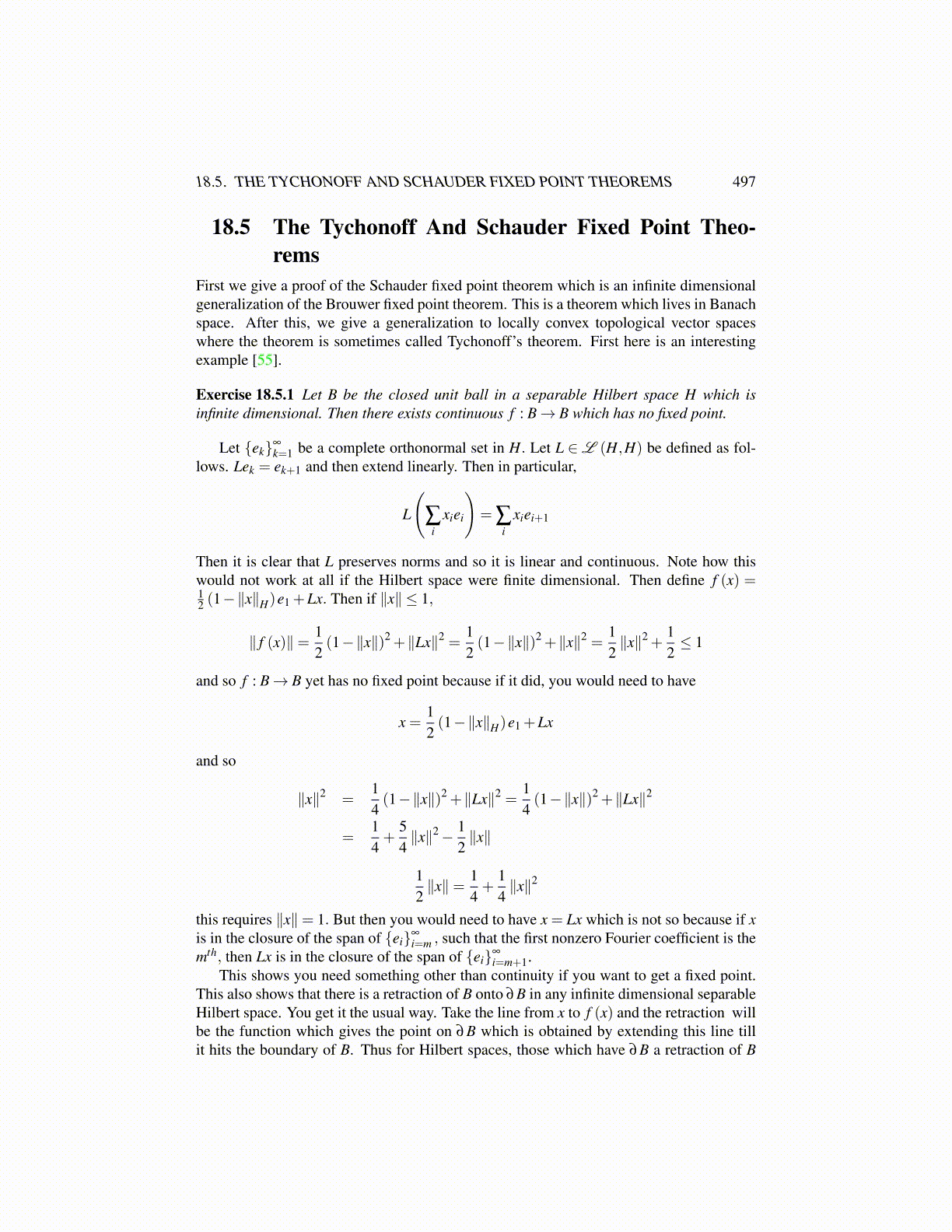
18.5. THE TYCHONOFF AND SCHAUDER FIXED POINT THEOREMS 497
18.5 The Tychonoff And Schauder Fixed Point Theo-rems
First we give a proof of the Schauder fixed point theorem which is an infinite dimensionalgeneralization of the Brouwer fixed point theorem. This is a theorem which lives in Banachspace. After this, we give a generalization to locally convex topological vector spaceswhere the theorem is sometimes called Tychonoff’s theorem. First here is an interestingexample [55].
Exercise 18.5.1 Let B be the closed unit ball in a separable Hilbert space H which isinfinite dimensional. Then there exists continuous f : B→ B which has no fixed point.
Let {ek}∞
k=1 be a complete orthonormal set in H. Let L ∈L (H,H) be defined as fol-lows. Lek = ek+1 and then extend linearly. Then in particular,
L
(∑
ixiei
)= ∑
ixiei+1
Then it is clear that L preserves norms and so it is linear and continuous. Note how thiswould not work at all if the Hilbert space were finite dimensional. Then define f (x) =12 (1−∥x∥H)e1 +Lx. Then if ∥x∥ ≤ 1,
∥ f (x)∥= 12(1−∥x∥)2 +∥Lx∥2 =
12(1−∥x∥)2 +∥x∥2 =
12∥x∥2 +
12≤ 1
and so f : B→ B yet has no fixed point because if it did, you would need to have
x =12(1−∥x∥H)e1 +Lx
and so
∥x∥2 =14(1−∥x∥)2 +∥Lx∥2 =
14(1−∥x∥)2 +∥Lx∥2
=14+
54∥x∥2− 1
2∥x∥
12∥x∥= 1
4+
14∥x∥2
this requires ∥x∥= 1. But then you would need to have x = Lx which is not so because if xis in the closure of the span of {ei}∞
i=m , such that the first nonzero Fourier coefficient is themth, then Lx is in the closure of the span of {ei}∞
i=m+1.This shows you need something other than continuity if you want to get a fixed point.
This also shows that there is a retraction of B onto ∂B in any infinite dimensional separableHilbert space. You get it the usual way. Take the line from x to f (x) and the retraction willbe the function which gives the point on ∂B which is obtained by extending this line tillit hits the boundary of B. Thus for Hilbert spaces, those which have ∂B a retraction of B